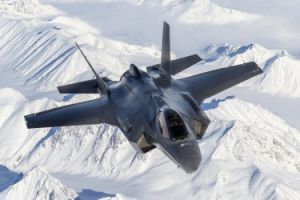Worldwide Aircraft Sensors Market Outlook 2019-2025: Based on Connectivity, Wireless Sensors Will Witness the Highest Growth
DUBLIN, July 17, 2019 /PRNewswire/ -- The "Aircraft Sensors Market by Connectivity, Platform (UAV, Fixed, Rotary), Sensor (Pressure, Temperature, Speed, Proximity, Gyro) Application (Engine, Door, Environmental Control), End Use (OEM, Aftermarket), and Region - Global Forecast to 2025" report has been added to ResearchAndMarkets.com's offering.
https://mma.prnewswire.com/media/539438/Research_and_Markets_Logo.jpg
The Aircraft Sensors Market is projected to grow from US$3.8 Billion in 2019 to US$4.9 Billion by 2025.
This research report categorizes the aircraft sensors market on the basis of platform, sensor type, application, and connectivity. These segments and sub-segments were mapped across major regions, namely, North America, Europe, Asia Pacific, and the Rest of the World.
Major companies profiled in the report include Honeywell International Inc. (US), TE Connectivity Ltd. (Switzerland), AMETEK, Inc. (US), General Electric Company (US), Curtiss-Wright Corporation (US), Safran Electronics & Defense (France), Esterline Technologies Corporation (US), and Thales Group (France), among others.
Increase in demand for new aircraft is one of the most significant factors driving the aircraft sensors market
This growth can be attributed to factors, such as an increase in demand for aircraft, increased investments in aircraft sensors industry by private equity groups, and advancements in aircraft sensors technologies, among others. However, regulations by aviation safety agencies pertaining to aircraft sensors are anticipated to restrain the growth of this market.
Based on platform, the fixed-wing aircraft segment is estimated to account for the largest share of the aircraft sensors market in 2019
By platform, the fixed-wing aircraft segment is estimated to account for the largest share of the aircraft sensors market in 2019. The growth of the fixed-wing aircraft segment can be attributed to the increased use of these type of aircraft in the commercial aviation sector. Furthermore, the increase in demand for low-cost carriers is one of the factors driving the demand for narrow-body aircraft, globally.
According to Boeing's Current Market Outlook 2017, the global fleet size of narrow-body aircraft is expected to reach 32,280 by the end of 2035. Asia is expected to account for almost 38% of the total expected deliveries by 2035. This growth can be attributed to the increase in demand for aircraft and a rise in the adoption rate of aircraft sensors in these aircraft.
Based on connectivity, the wireless sensors segment to witness the highest growth in the aircraft sensors market from 2019 to 2025
The wireless sensors segment is expected to grow significantly in the future due to the advantages it offers over wired sensors. In addition, increased deployment of structural health monitoring systems in aircraft, which use IoT technologies, is also expected to drive the growth of the wireless sensors segment during the forecast period.
North America is estimated to account for the largest share of the aircraft sensors market in 2019, whereas, the aircraft sensors market in Asia Pacific is projected to grow at the highest CAGR during the forecast period
North America is estimated to account for the largest share of the aircraft sensors market in 2019. Major aircraft manufacturers, such as Boeing (US), Bombardier (Canada), Lockheed Martin (US), Bell Helicopter (US), and Sikorsky Aircraft (US), among others, are based in this region, and they witness huge demand for aircraft sensors. North America is also estimated to lead the aircraft sensors market during the forecast period, in terms of market share.
The Asia Pacific aircraft sensors market is projected to grow at the highest CAGR during the forecast period, owing to the presence of emerging aircraft manufacturers, such as COMAC (China) and Mitsubishi Aircraft Corporation (Japan), among others. Furthermore, economic growth of countries in the region, increased air travel, rise in air passenger traffic, and increased need for new aircraft are few other reasons for the growth of the aircraft sensors market in this region.
Key Topics Covered
1 Introduction
2 Research Methodology
3 Executive Summary
4 Premium Insights
4.1 Internet of Aircraft Things to Offer Several Untapped Opportunities in the Aircraft Sensors Industry
4.2 Aircraft Sensors Market, By Sensor Type
4.3 North America Aircraft Sensors Market, By Platform
4.4 Aircraft Sensors Market, By Application
4.5 Aircraft Sensors Market, By Region
5 Market Overview
5.1 Introduction
5.2 Market Dynamics
5.2.1 Drivers
5.2.1.1 Increasing Demand for New Aircraft Across the Globe
5.2.1.2 Increasing Investments By Private Equity Firms in the Aircraft Sensors Market
5.2.1.3 Advancements in Microelectromechanical Systems (MEMS) Technology
5.2.2 Restraints
5.2.2.1 Regulations By Aviation Safety Agencies
5.2.3 Opportunities
5.2.3.1 Increasing Adoption of Internet of Aircraft Things in the Aviation Industry
5.2.3.2 Increasing Demand for Sensors in the Growing Unmanned Aerial Vehicles Industry
5.2.4 Challenges
5.2.4.1 Cybersecurity Risks
5.2.4.2 Growing Complexity in the Designs of Aircraft Sensors
6 Industry Trends
6.1 Introduction
6.2 End-Use Requirements vs Importance
6.3 Innovations and Patent Registrations
6.4 Entrance of New Market Players and Increased Mergers and Acquisitions
6.5 Technology Trends
6.5.1 Emergence of Wireless Sensors Networks
6.5.2 on Wings De-Icing Sensors
6.5.3 Microelectromechanical System (MEMS) Sensors
6.5.4 Aircraft Health Monitoring System Sensors
6.6 Key Trend Analysis
7 Aircraft Sensors Market, By Platform
7.1 Introduction
7.2 Fixed-Wing Aircraft
7.2.1 Commercial Aviation
7.2.1.1 Narrow Body Aircraft
7.2.1.2 Regional Transport Aircraft
7.2.1.3 Wide Body Aircraft
7.2.1.4 Very Large Aircraft
7.2.2 General Aviation
7.2.2.1 Business Aircraft
7.2.2.2 Light Aircraft
7.2.3 Military Aviation
7.2.3.1 Fighter Aircraft
7.2.3.2 Transport Aircraft
7.3 Rotary-Wing Aircraft
7.3.1 Civil Helicopters
7.3.2 Military Helicopters
7.4 Unmanned Aerial Vehicle (UAV)
7.4.1 Increasing Adoption of UAVs By Militaries Across the World for Isr and Combat Application is Expected to Drive the UAVs Segment
8 Aircraft Sensors Market, By Application
8.1 Introduction
8.2 Engines, Cross Market By Sensor Type
8.2.1 Increasing Need for Aircraft Sensors in Engines is Expected to Drive the Engines Segment
8.3 Doors & Slides, Cross Market By Sensor Type
8.3.1 Increasing Demand for Commercial and Military Fixed-Wing Aircraft is Expected to Drive the Doors & Slides Segment
8.4 Cabin & Cargo Environmental Controls, Cross Market By Sensor Type
8.4.1 High Demand for Passenger Safety and Environmental Control is Expected to Drive the Market for Cabin & Cargo Environmental Controls
8.5 Flight Deck & Flight Controls, Cross Market By Sensor Type
8.5.1 Growing Demand for Flight Control Data is Expected to Drive the Market for Flight Deck & Flight Controls Segment
8.6 Landing Gear, Wheels, & Brakes, Cross Market By Sensor Type
8.6.1 Increasing Demand for Fixed-Wing Military and Commercial Aircraft is Expected to Drive the Market for Landing Gear Segment
8.7 Fuel, Hydraulic, & Pneumatic Systems, Cross Market By Sensor Type
8.7.1 Increasing Demand for Fixed-Wing and Rotary-Wing Aircraft and UAVs is Expected to Drive the Market for Fuel Hydraulic Systems
9 Aircraft Sensors Market, By Sensor Type
9.1 Introduction
9.2 Pressure Sensors
9.2.1 High Demand for Sensing Barometric, Cabin Air and Hydraulic, Fuel, Turbine Inlet Pressure and Compressor Pressure is Expected to Drive the Market for Pressure Sensors.
9.3 Temperature Sensors
9.3.1 The Demand to Measure Temperature Variations Across Regions is Expected to Drive the Market for Temperature Sensors
9.4 Force Sensors
9.4.1 Increasing Demand for Sensing Force on Different Parts of the Aircraft Such as Aileron and Rudder Flight Control is Expected to Drive the Market for Force Sensors
9.5 Torque Sensors
9.5.1 High Demand for Measuring Torques in Various Applications Such as Gearboxes and Electric Motors is Expected to Drive the Market for Torque Sensors
9.6 Speed Sensors
9.6.1 The Demand for Speed Sensors is Growing as They are Capable to Measure the Speed of Hydraulic Motors, Pumps, Gearboxes, and Flow Meters/Turbines
9.7 Position & Displacement Sensors
9.7.1 Increasing Requirement for Displacement Sensors in Primary and Secondary Flight Control, Electro-Hydraulic Actuators, Engine Control Valves, and Brake-By-Wire Systems is Expected to Drive the Market for Position & Displacement Sensors
9.8 Accelerometers
9.8.1 The Demand for Accelerometers is Increasing as They are Used for in Guidance Systems, IRS, IRU, and ADIRU
9.9 Level Sensors
9.9.1 Increasing Requirement for Measuring Liquid Level in an Aircraft is Expected to Drive the Market for Level Sensors
9.10 Flow Sensors
9.10.1 The Demand for Flow Sensors Increases as Across Various Industries as They are an Integral Component of Fuel Flow Meters in Aircraft. Flow Sensors Improve Energy Efficiency, Sustainability, and Consume Less Energy
9.11 Proximity Sensors
9.11.1 Proximity Sensors Enables Detection of an Object With an Aircraft
9.12 Gyroscopes
9.12.1 The Demand for Gyroscopes Increases as They are Widely Used for Navigation and Measurement of the Angular Velocity of Aircraft
9.13 Global Positioning System (GPS) Sensors
9.13.1 The Demand for GPS Sensors Increases as They Help Aircraft to Determine Attitude and Heading Values
9.14 Pitot Probes
9.14.1 High Requirement for Pitot Probes to Measure Airspeed is Expected to Drive the Market for Pitot Probes
9.15 Radar Sensors
9.15.1 Increasing Need for Radar Sensors to Generate Data Concerning the Flight Path of the Aircraft is Expected to Drive the Radar Sensors Segment
9.16 Angle-Of-Attack (AOA) Sensors
9.16.1 The Demand for Angle-Of-Attack Sensors Increases as They Capable of Providing Measurements Under All Environmental Conditions
9.17 Altimeter Sensors
9.17.1 High Demand for Measuring Altitude in Commercial and Military Aircraft is Expected to Drive the Market for Altimeter Sensors
9.18 Smoke Detection Sensors
9.18.1 Increasing Demand for Narrow Body and Wide Body Aircraft is Expected to Drive the Market for Smoke Detection Sensors
9.19 Others
10 Aircraft Sensors Market, By End-Use
10.1 Introduction
10.2 OEM
10.2.1 Increased Demand for Commercial Airliners is Driving the Demand for Aircraft Sensors
10.3 Aftermarket
10.3.1 Growing Commercial Aircraft Industry, Along With the Increasing Average Age of Commercial Aircraft are Driving the Growth of the Market
11 Aircraft Sensors Market, By Connectivity
11.1 Introduction
11.2 Wired Sensors
11.2.1 High Reliability and Low Maintenance of Wired Sensors Will Drive the Market for Wired Sensors
11.3 Wireless Sensors
11.3.1 Due to Low Installation and Maintenance Cost the Demand for Wireless Sensors is Expected to Grow
12 Regional Analysis
13 Competitive Landscape
13.1 Introduction
13.2 Competitive Leadership Mapping, 2018
13.2.1 Visionary Leaders
13.2.2 Innovators
13.2.3 Dynamic Differentiators
13.2.4 Emerging Companies
13.3 Competitive Benchmarking
13.3.1 Strength of Product Portfolio
13.3.2 Business Strategies Excellence
13.4 Start-ups Competitive Leadership Mapping, 2018
13.4.1 Visionary Leaders
13.4.2 Innovators
13.4.3 Dynamic Differentiators
13.5 Aircraft Sensor Analysis By Type and Program
13.5.1 Sensor Suppliers By Type of Sensors
13.5.2 Pressure and Temperature Sensor Supplier Analysis By Major Programs
13.5.3 Flow Sensor Suppliers Analysis By Major Programs
13.5.4 Whom to Whom Analysis, By Aircraft Program
13.5.4.1 Boeing-787
13.5.4.2 Airbus-320
13.5.4.3 Boeing-737
13.5.4.4 Airbus-350
13.5.4.5 Lockheed Martin F-35
13.6 Key Competitor
13.6.1 Esterline
13.6.2 Ametek
13.6.3 Kulite Semiconductor Products Inc.
13.6.4 Lord Sensing-Stellar Technology
13.6.5 Druck (GE)
14 Company Profiles
14.1 Honeywell International Inc.
14.2 TE Connectivity Ltd.
14.3 UTC Aerospace Systems
14.4 Zodiac Aerospace
14.5 Ametek Inc.
14.6 Meggitt PLC
14.7 Safran Electronics & Defense
14.8 Curtiss-Wright Corporation
14.9 Esterline Technologies Corporation
14.10 Thales Group
14.11 The Raytheon Company
14.12 General Electric Company
14.13 Eaton Corporation
14.14 Crane Aerospace
14.15 Lord Sensing-Stellar Technology
For more information about this report visit https://www.researchandmarkets.com/r/j1b87j
Research and Markets also offers Custom Research services providing focused, comprehensive and tailored research.
Media Contact:
Laura Wood, Senior Manager
press@researchandmarkets.com
For E.S.T Office Hours Call +1-917-300-0470
For U.S./CAN Toll Free Call +1-800-526-8630
For GMT Office Hours Call +353-1-416-8900
U.S. Fax: 646-607-1907
Fax (outside U.S.): +353-1-481-1716
View original content:http://www.prnewswire.com/news-releases/worldwide-aircraft-sensors-market-outlook-2019-2025-based-on-connectivity-wireless-sensors-will-witness-the-highest-growth-300886785.html
SOURCE Research and Markets





